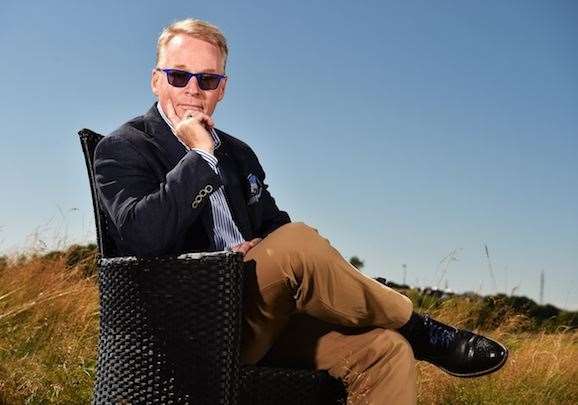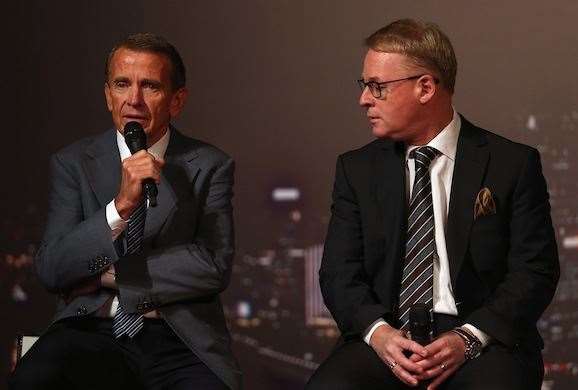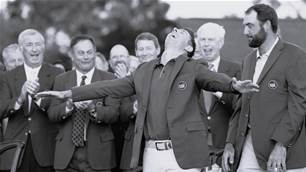It's a time of great change on the European Tour under new chief Keith Pelley, who ultimately plans to take the Tour global, John Huggan writes.
BY GOLF AUSTRALIA COLUMNIST AT LARGE, JOHN HUGGAN
It would represent something of a cruel disservice to all concerned if the just-ended reign of George O’Grady as European Tour executive director were compared unfavourably to a decade-long bout of sleep-walking. But not by much. Admittedly hampered by the economic meltdown from which the world has yet to fully emerge, O’Grady and Wentworth-based cohorts didn’t do much more than tread water in the early part of this 21st century.
Tournaments came and went, but the leading players mostly went. West that is, attracted by the mountain of dollars available on the PGA Tour. It has ever been thus, of course. The clue is in the title when it comes to professional golfers. They go where the money is.
So, no matter how often the Old World’s finest golfers give those pesky colonials a right good kicking in the biennial Ryder Cup matches, the European Tour has forever been perceived as second best. Geographically adjacent to three of the world’s four most important events, PGA Tour commissioner Tim Finchem’s money-grab is almost universally regarded as the place to play – no matter the sameness of the courses or the week-to-week challenge.
 European Tour CEO Keith Pelley has been proactive since taking over the reins last August.
European Tour CEO Keith Pelley has been proactive since taking over the reins last August.PHOTOS: Getty Images
Still, things can change. And change they have at the top of the European Tour. There’s a lot going on at Wentworth these days, courtesy of O’Grady’s colourful – well, his glasses anyway – successor, a 51-year old Canadian by the name of Keith Pelley.
In only three months or so, the Toronto-native has made more potentially far-reaching and controversial decisions than O’Grady did over the course of his whole tenure.
Already, Pelley has made changes to the tour’s membership requirements. Players will now have to make only five starts out with the majors or the WGCs.
The 2016 clash of the French Open and the WGC Bridgestone Invitational was summarily dealt with in a way most beneficial to the European Tour. “It was an easy decision,” claims Pelley. “You support your partners – as simple as that.” So the next Bridgestone will not be sanctioned by the Old World circuit. Take that Mister Finchem.
Rightly or wrongly, Rory McIlroy’s injury-interrupted 2015 season was sympathetically handled when the Tour’s star player was allowed to retain his membership despite making only 12 of the requisite (and now defunct) 13 starts.
“Usually when a new CEO or president comes into a company, you have the luxury of sitting back, evaluating all facets of the business, creating a strategy, articulating that strategy and moving into execution mode,” says Pelley. “We were operational on day two. On day two I was in Singapore. I arrived overnight at Wentworth from Toronto. I found out where my office was, how you turn the lights on. Then I went to Singapore. Then when I got back we had the Bridgestone thing. Then we had the Rory decision.”
Speaking further at the season-ending DP World Tour Championship in Dubai last November, Pelley was bullish about the future in a way that none of his predecessors ever dared emulate. He even went as far as to say that the new global circuit he has in mind for a merged European and Asian Tours – “our goal is to merge and have a combined money list, while at the same time merge the businesses” – would provide a “viable alternative to the PGA Tour” within the next three to five years.
“We need to be too important to be dismissed from our sponsors, from our stakeholders, from our players,” he continued. “And that means we are going to have to increase our prize purses, so that players don’t necessarily need to go to America to be able to make as much money as they possibly can.”
The time frame proposed by Pelley is understandable. If the new chief is as astute as he appears – and the smart money says that he is – he knows that tempting the current generation of stars out of their Florida mansions (and those awful gated communities so beloved of Uncle Sam’s more affluent nieces and nephews) is something of a lost cause. The likes of McIlroy, Henrik Stenson, Luke Donald, Ian Poulter, Paul Casey and Justin Rose are not coming home to stay. Not now, not ever. Nor are Scots Russell Knox and Martin Laird. Both, like Donald and Casey, went to college in the States and settled there after graduation.
 Pelley is tackling Tim Finchem's PGA Tour head-on to offer a viable and lucrative alternative for players. PHOTO: Getty Images
Pelley is tackling Tim Finchem's PGA Tour head-on to offer a viable and lucrative alternative for players. PHOTO: Getty ImagesNo, Pelley’s targets are surely (mostly) younger men like Eddie Pepperell, Andy Sullivan, Danny Willett, Bernd Weissberger, Victor Dubuisson, Matthew Fitzpatrick, Martin Kaymer, Tommy Fleetwood and Marc Warren. Throw in the next generation of stars – unknowns currently in their mid-teens – and Asian luminaries like Kiradech Aphibranrat and Anirban Lahiri, and Pelley will have something tangible and attractive to sell to the sort of blue-chip sponsors needed to make the Euro/Asian Tour a financially viable substitute to Finchem’s multi-million dollar boondoggle.
Travelling almost everywhere on the planet other than the US also gives Pelley a gilt-edged opportunity to present a real variety of courses and challenges to his members. A month-long “links season” starting after the US Open and climaxing with the Open Championship in the middle of every Northern Hemisphere summer has an obvious attraction.
Building such a run around the Dutch Open, Irish Open and Scottish Open also has the added benefit of highlighting national titles – South Africa would be another – that are surely more enticing to players and public than, say, “The CareerBuilder Challenge in partnership with the Clinton Foundation” or the “Zurich Classic of New Orleans.” These are not titles around which impressive and/or historic curriculum vitaes are built.
Throw in a month in Australia playing the likes of Royal Melbourne, Kingston Heath and New South Wales right after the traditional Middle East swing that takes in Abu Dhabi, Qatar and Dubai and the new-look European Tour could surely be the place to be until the world’s best head for Florida in the build-up to the Masters.
“I look at us as a world tour,” says Pelley. “I look at our diversity and our cultural opportunities as our biggest asset.”
So there is much to look forward to and much potential to be tapped over the next few years. That “viable alternative” to the PGA Tour Pelley wants to provide “for our elite, medium and low-ranked players” is possible. But it’s going to take time. Patience folks.
Related Articles

Feature Story: Moving the Needle

The Aussies at The Open













